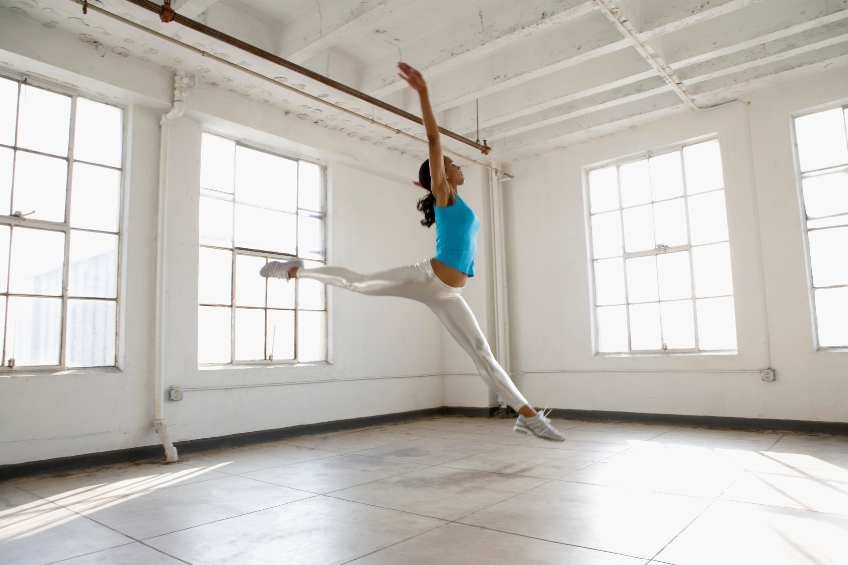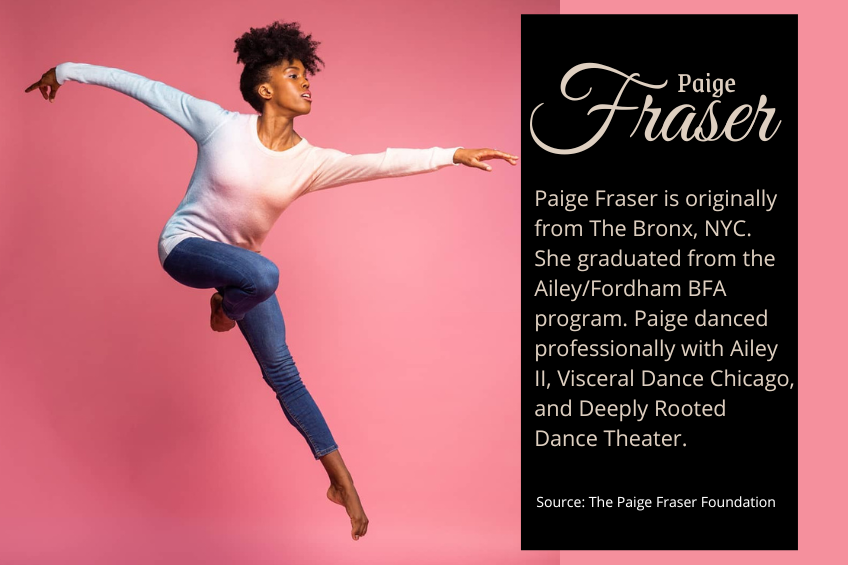Dancing With Scoliosis
There are experts who recognize that professions such as gymnastics and dancing can exacerbate idiopathic scoliosis. These wonderful athletic abilities are passions of young girls who upon reaching ages close to puberty are diagnosed with scoliosis. Should this medical condition stop these young girls from pursuing their dreams?

Imagine when a young girl is at a routine checkup with her doctor, and she finds out that she has scoliosis. By asking the simple question, “roll down and touch your toes’ ‘, a girl’s life can be altered forever. Don’t panic! This diagnosis does not have to be the shattering of a dream of a young girl with her heart set on being a dancer.
Would a professional baseball star stop playing because his orthopedist tells him that if he keeps playing his injuries will worsen? Does a boxer leave the ring when he gets hurt? Although dancing might indeed take its toll on a young girl’s body, no one can ask her to give up her desire.
Normally, the spine, the ribs and the pelvis will look mostly level and balanced with one another, however, if a dancer has scoliosis, he or she may have one shoulder higher than the other or look tilted to one side. Each case of scoliosis is unique and each one presents its own challenge. Let’s look at two passionate dancers and how they dealt with their scoliosis diagnosis at such critical times in their budding dancing careers.
“Bent But Not Broken”
The phrase above is the clarion call of a wonderful and talented dancer who was diagnosed with idiopathic scoliosis at age thirteen just as she started her high school journey. Paige Fraser learned that she suffered from scoliosis at a routine checkup when the doctor asked her to bend down so he could examine her back. He immediately sent her for an X-ray which confirmed his unfortunate diagnosis. He showed Paige the x-ray and explained to her that her spine was curved like an S. She left the doctor’s office scared, frustrated and angry since she had no prior warning, no symptoms, and no discomfort.
Paige’s mom saw her talent and when she was ten years old her mom enrolled her in a ballet school. At that time, this Bronx, New York native simply enjoyed dancing but as she excelled at her practice and lessons she realized this is something that she would like to dedicate her future to. Her mom enrolled her in the Performing Arts High School in New York City and Paige began to take her dancing seriously.

In ninth grade Paige was diagnosed with scoliosis and was forced to learn exactly how her body functioned under pressure, specifically her spine. The first specialist she went to, informed her that she needed spinal surgery. He also let her know in no uncertain terms that she would have metal rods inserted into her back and she would no longer be able to bend normally. This did not jive with her dancing talent because dancers have specific movements, and the rods would limit those actions. However, Paige’s parents would not accept this diagnosis sitting down and they asked around for other options. They were recommended to a chiropractor who fitted Paige with two braces, one for day and one for sleeping.
Paige has been dancing since she began to walk. One of her teachers noticed her talent and cast her as Clara in The Nutcracker when she was ten years old. In fact, her teacher in the school dance department suffered with severe scoliosis herself and since she herself had a severe curvature she was very helpful to Paige as she was getting used to her scoliosis diagnosis.
Scoliosis did limit the amount of turns that Paige could do at one time. It was not scientifically possible for her to do more than two or the most three turns. Paige had to work much harder than a normal dancer to achieve positions that her peers took for granted.
There was no stopping Paige no matter how difficult it was for her to dance while bracing and therapy. After completing high school, Paige was accepted at the Ailey School of Dance in addition to her attendance at Fordham University. After being accepted at the Ailey dance tour company she toured worldwide while dancing up a storm professionally.
Paige attained great success in professional dancing in spite of being treated for scoliosis. She was accepted full time at the Visceral Dance Center of Chicago, won the Princess Grace Dance Award in 2017 and ultimately won a role in the touring company of the Broadway hit, The Lion King after failing more than five auditions in previous years.
During a Zoom interview, Paige admits that her scoliosis is a challenge in her dancing career. The moves that a dancer with scoliosis must perform are often anti-scoliosis moves. For example, dancers must, “square off the hips” and ribcage and this is difficult for someone with her condition.

As a youngster Paige was trained in ballet dancing. As she got older her career branched out to Broadway and even Jazz. With Jazz, the dancer must roll up and roll down very quickly. She was quite concerned that she did not have the same mobility as the other dancers. There are some scoliosis sufferers who have one leg shorter than the other and it is difficult to get the feet to align properly. Because of her scoliosis, Paige is very sensitive to other dancers with various disabilities, whether physical or mentally challenged and she started a dance school in 2017 which is a virtual school that is free.
Leah Roddenberry
When Leah was in eighth grade her mom noticed that her right shoulder blade was strangely sticking out. This was right before Leah was scheduled to go to dance class and she was dressed in her leotard which showed every curve clearly and precisely. It was peculiar since Leah had already been evaluated for scoliosis in sixth grade and no problem was detected. She was told after an x-ray that she had a slight 20-degree curvature. Her doctor, Dr. Neustadt, a scoliosis specialist at All Children’s Hospital in St. Pete, recommended that she be fitted with a hard brace to wear to sleep. Even though the brace was uncomfortable Leah was determined and wore it every night. However, this therapy did not solve her scoliosis and not only was it getting worse, but she began having pain in her back. A noticeable hump was appearing on the right side of her back and since this therapy was not helping her doctor prescribed spinal fusion surgery.
When Leah asked her doctor if she would be able to dance after surgery, he could not give an affirmative answer. Imagine Leah’s concerns which she articulated to her doctor. Leah has been dancing since she was three years old, and her passion has only increased. The doctor theorized that Leah would need rods in her back and that would mean losing the flexibility of bending at will. Leah was so shattered and at that moment she truly believed that her dancing career was over.
G-d fortunately had different plans. After the surgery Dr Neustadt came to tell Leah the good news. Since her spine was very flexible, he did not have to fuse the entire spine. It took many months of practice, blood, sweat and tears and Leah went on to become Miss Florida in 2021 and competed in the Miss America Pageant. She performed a most difficult jazz dance in the competition with this song playing as she danced, “Don’t Stop Me Now”
How Do Dancers Such as Paige Overcome Such Great Obstacles?
As one of our dancers said, there are always obstacles in life to overcome. Sometimes they are obstacles that are outwardly noticeable and sometimes they are obstacles of the heart and soul. We don’t choose our obstacles, but we choose how to handle them. As a famous person noted, ‘Be a victim or be a victor”. That choice is in the realm of your reality.
All the dancers shared that strength of their family and acknowledging their scoliosis publicly were important catalysts in their successes. Leah remarked, “I started embracing my scar and surgery not as a weakness, but as my strength. I was motivated to push past my roadblock and pursue my passion for dance.”
Paige believed from the time of her diagnosis that it was crucial for her to tell people about her struggle,” I couldn’t be quiet if I wanted to be a dancer.” She also had to put aside any negative thoughts and only think about success. Through physical therapy Paige was able to stabilize her spine and has only occasional stiffness. Every dancer has pain so why should Paige and other dancers with scoliosis stop? These feminine heroes are role models for their younger contemporaries who are sometimes discouraged from following a dream if it becomes difficult. You may be a writer with writer’s block, a nurse with difficult patients, a worker with a tough boss, each challenge is unique.
Whoever you are and whatever roadblocks you are facing you can be successful if you have family who believe in you, you believe in yourself and your right to see your passion through. Also remember that it is so important to talk your problems over with someone who can commensurate with you. Paige was fortunate that when she was faced with adversity, she had a dance teacher who was also experiencing scoliosis. It might not be so easy to find the right person to confide in but keep trying and you will win.


